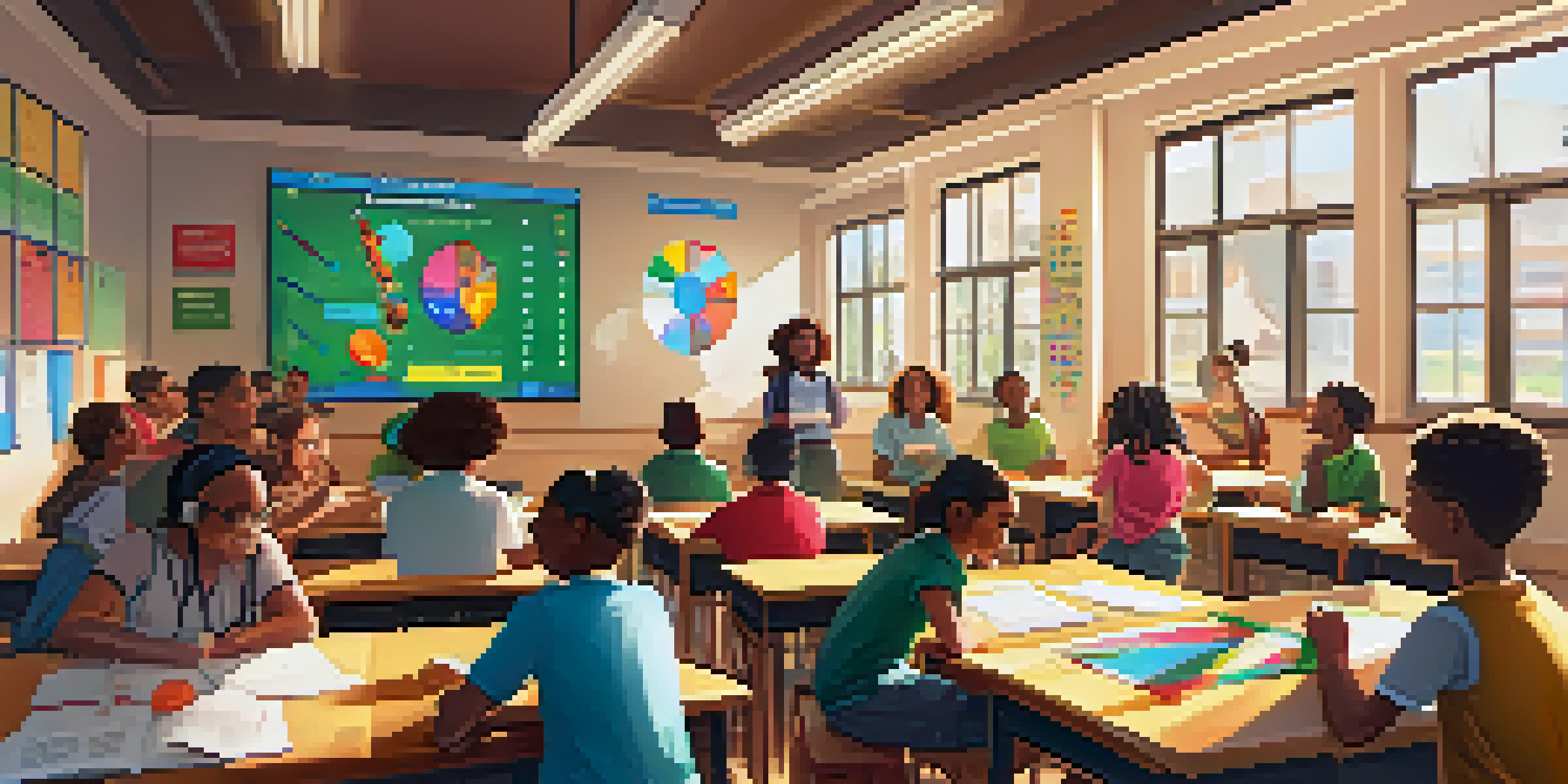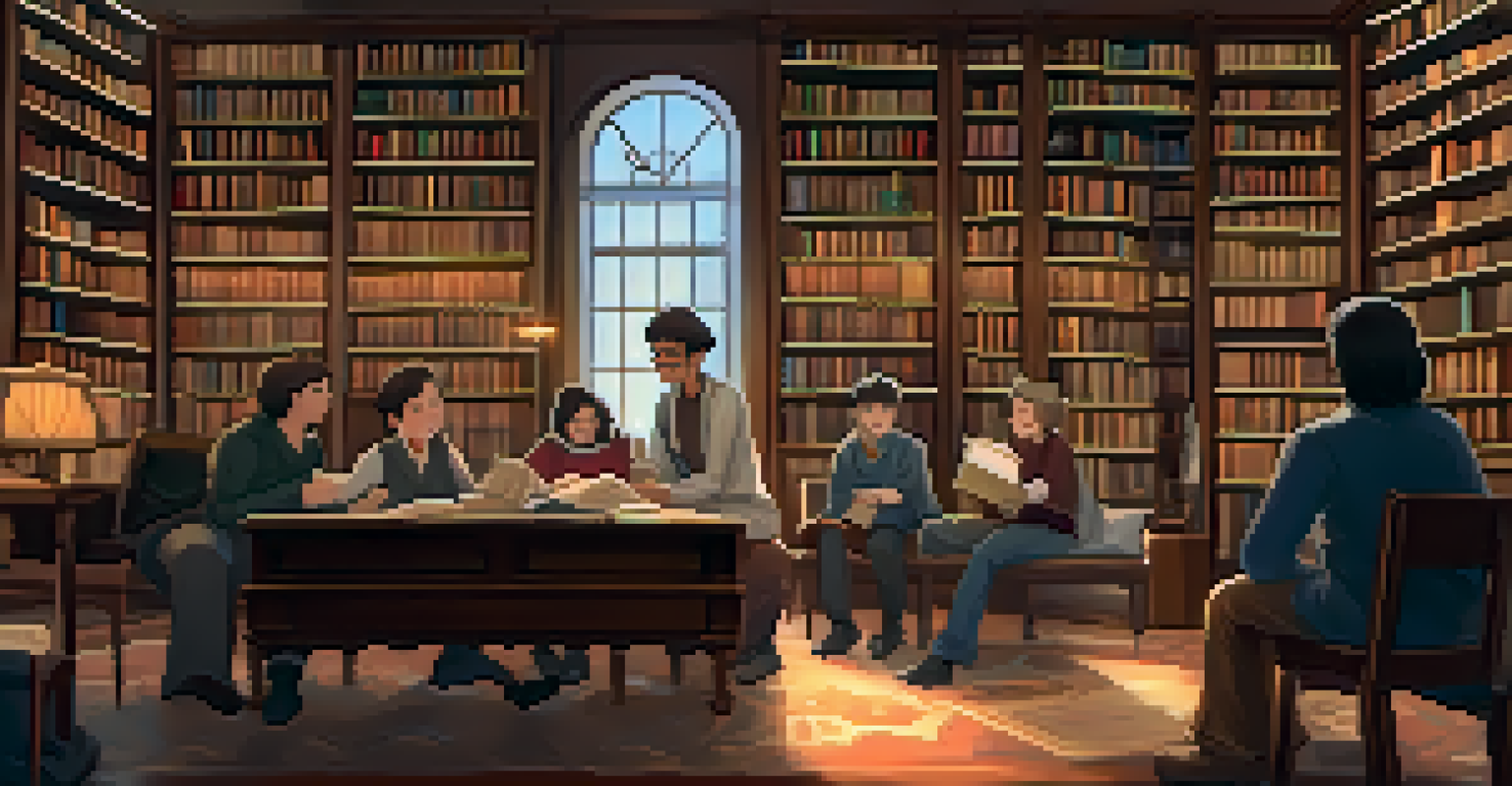Gamification in Lifelong Learning: Engaging Strategies to Try

Understanding Gamification and Its Importance in Learning
Gamification is the integration of game-like elements into non-game contexts, such as education. By incorporating features like points, badges, and leaderboards, it makes learning more interactive and enjoyable. This approach taps into our natural desire for competition and achievement, making it a powerful tool in lifelong learning.
Gamification is not just a trend; it is a way to make learning more engaging and effective.
In a world where information is abundant, capturing attention is a challenge. Gamification breaks down traditional barriers to learning by making the process more engaging. It transforms mundane tasks into exciting challenges, which can significantly enhance motivation and retention of knowledge.
Moreover, gamification fosters a sense of community among learners. When individuals share their progress and achievements, it encourages collaboration and support, creating a more enriching learning environment. This social aspect is crucial for lifelong learning, as it builds connections and networks.
Setting Clear Goals for Gamified Learning Experiences
To effectively gamify a learning experience, it’s essential to establish clear and achievable goals. These goals act as milestones that guide learners through their journey, providing direction and purpose. When learners understand what they are working toward, their engagement levels can increase significantly.

For example, a language learning app might set daily practice goals that users can track. Achieving these goals not only provides a sense of accomplishment but also encourages them to continue learning. This clarity in objectives helps in maintaining focus and motivation over time.
Gamification Enhances Learning Engagement
By incorporating game-like elements, such as points and badges, gamification makes learning more interactive and enjoyable.
Additionally, incorporating feedback loops into the goal-setting process can be invaluable. Regular feedback allows learners to adjust their approaches, celebrate small victories, and stay committed to their learning paths. This continual adjustment fosters resilience and persistence, key traits for lifelong learners.
Incorporating Rewards and Incentives to Boost Engagement
Rewards and incentives are core components of gamification that can drastically enhance learner engagement. By offering tangible or intangible rewards, such as certificates, badges, or even simple recognition, learners are motivated to participate actively. This system of rewards taps into the psychology of achievement, making learning feel more rewarding.
Storytelling is the most powerful way to put ideas into the world today.
Take, for instance, an online course that offers badges for completing modules or quizzes. This not only recognizes the effort put in by learners but also encourages them to strive for more. When learners see their achievements visually represented, it can spur them on to tackle even greater challenges.
Moreover, creating a tiered reward system can cater to different levels of achievement. This way, beginners feel accomplished with small wins, while advanced learners are challenged to reach higher levels. The right balance of rewards can create an ongoing cycle of engagement and motivation.
Utilizing Competition to Foster a Healthy Learning Environment
Healthy competition can be an effective strategy in gamified learning. By introducing elements like leaderboards or team challenges, learners are encouraged to push their limits and improve their skills. This friendly rivalry can ignite passion and enthusiasm for the subject matter.
For instance, a classroom might have a quiz competition where teams earn points for correct answers. This not only promotes learning but also builds camaraderie among students. Celebrating successes, both individual and team-based, reinforces a sense of achievement and belonging.
Clear Goals Drive Learner Motivation
Establishing clear and achievable goals helps learners stay focused and increases their engagement in the learning process.
However, it's important to ensure that competition remains supportive rather than stressful. Establishing a culture where effort is recognized, regardless of the outcome, can help maintain a positive learning atmosphere. This balance is crucial for sustaining motivation and encouraging lifelong learning.
Leveraging Storytelling to Create Immersive Learning Experiences
Storytelling is a powerful tool in gamification that can transform learning experiences into immersive journeys. By weaving narratives into the learning process, educators can capture learners' imaginations, making the material more relatable and memorable. This technique engages learners emotionally, fostering a deeper connection with the content.
For instance, a history course might frame lessons around a historical figure's journey, allowing learners to step into their shoes and navigate challenges. This not only enhances understanding but also makes the learning experience more enjoyable. Incorporating twists and turns in the narrative can keep learners on their toes, eager to uncover what happens next.
Furthermore, storytelling can be adapted to different learning styles, ensuring inclusivity. Visual learners might benefit from videos or infographics, while auditory learners might prefer podcasts or narrated stories. By catering to diverse preferences, storytelling can enhance engagement and retention for all types of learners.
Creating Collaborative Learning Opportunities through Gamification
Collaboration is key in gamified learning environments, as it encourages teamwork and communication among learners. By designing activities that require group participation, educators can foster a sense of community and shared purpose. Collaborative gamification can lead to richer learning experiences, where learners benefit from each other's strengths.
For example, an online platform might offer group challenges where teams work together to solve problems or complete projects. This not only enhances critical thinking but also builds essential skills like negotiation and conflict resolution. Such interactions can deepen relationships and create a supportive learning atmosphere.
Collaboration Boosts Learning Outcomes
Collaborative gamification fosters teamwork and communication, enhancing critical thinking and creating a supportive learning environment.
Additionally, collaborative gamification promotes accountability. When learners are part of a team, they are more likely to stay engaged and contribute actively. This sense of responsibility can be a driving force in maintaining motivation and commitment to lifelong learning.
Evaluating the Impact of Gamification on Learning Outcomes
To understand the effectiveness of gamification in lifelong learning, it’s crucial to evaluate its impact on learning outcomes. This involves measuring not only academic success but also engagement levels, retention rates, and learner satisfaction. Regular assessment helps refine gamified strategies to better meet learners' needs.
For instance, surveys or feedback sessions can provide insights into learners' experiences with gamified elements. Analyzing this data can reveal what works and what doesn’t, enabling educators to make informed adjustments. This iterative process is essential in creating a sustainable gamified learning environment.

Furthermore, success stories and case studies can illustrate the positive effects of gamification. Sharing these outcomes with the broader community can inspire others to adopt similar strategies. Ultimately, continuous evaluation and adaptation ensure that gamification remains an effective tool in promoting lifelong learning.